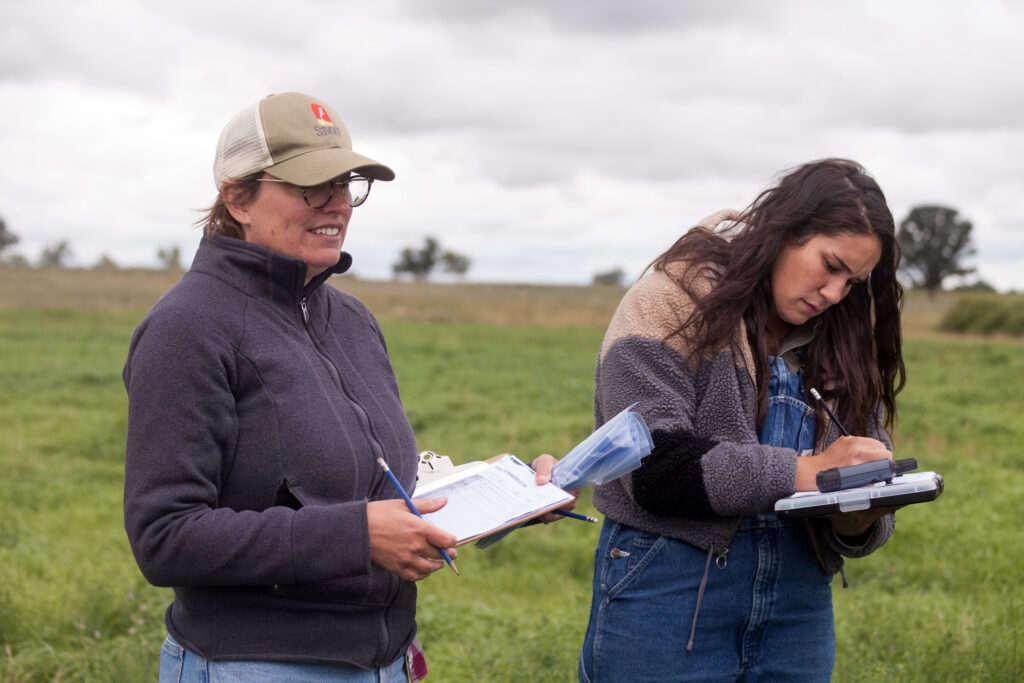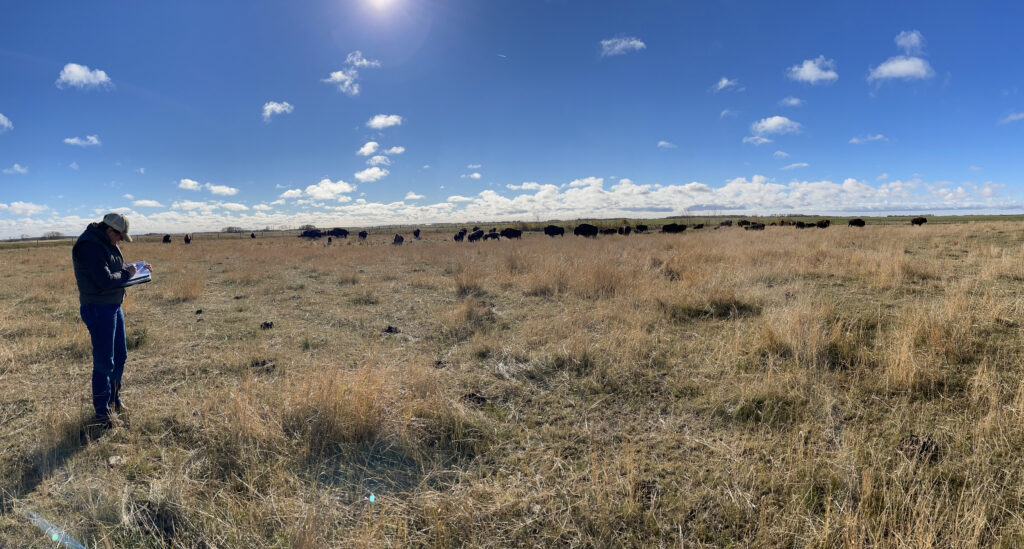
Regenerating Land for the Future
Like many ag families in Canada, Doug Griller from Quill Creek Farms learned about farming and ranching from the generations who came before him. He never doubted the knowledge and experience his parents and grandparents gained in managing both the land and the animals it supported. But with a changing climate and consumer expectations for animal and land health, Doug began to wonder if there was a better way to do what he had always done.

In 2022, Doug met Bronwyn Green and Dana Prenrice of Holistic Management. That was the year Noble Premium Bison joined Land to Market, the world’s first verified sourcing solution for regenerative agriculture. As the primary bison supplier to Noble, Doug invited Bronwyn and Dana to the ranch in order to establish the baseline health of over 1500 hectares. Using the scientific protocols for Ecological Verification Outcome (EOV™), assessing the current state of the land was the first step in establishing the health of Doug’s land for verification of regeneration one year later.
We called Bronwyn to ask about the EOV process with respect to bison, and her experience working as a soil agrarian with livestock farmers in Manitoba and Saskatchewan.
EOV: The Revolutionary Science behind the Movement
“My passion is to help farmers build a land base that can support people and animals for many, many years.” Bronwyn Green
I began working with Holistic Management when Dana caught word that I was consulting with farmers on my own, to measure the health of their soil. Soil health is an area I’ve always been fascinated about, so when I discovered the EOV science through Dana, it was a game changer for me. Here was an organization and network of people who had already done all the (scientifically-backed) research that I could tap into. The depth and breadth of the EOV model went far beyond what I had been doing up to that point.

EOV is a practical and scalable soil and landscape assessment methodology that tracks multiple outcomes – in biodiversity, soil health, and ecosystem function. If one ecosystem is struggling, it will affect the others. EOV was developed (over many years) by the Savory Institute in partnership with universities and the scientific community. At Holistic Management, we’re working with farmers to determine if their land is degenerating, sustaining its current health, or regenerating. Of course, our mutual goal is regeneration, where the soil is restored, biodiversity grows, and water and carbon are absorbed.
EOV is a scientific data collection protocol, designed to look at the whole ecosystem function, keep farmers first, and be relevant across a multitude of landscapes. Using EOV, I’ve helped assess and verify regeneration on a variety of livestock farms in Saskatchewan and Manitoba, but the ranch at Quill Creek was my first experience with bison.
Bison were made to regenerate the land
Any bison producer will tell you that bison are very different in terms of how they utilize the land, and more importantly, what they leave behind. I saw this for myself on our verification visit to Quill Creek in October 2023.
Doug gives his bison an enormous amount of space to graze naturally, but it’s their grazing habits that are so interesting. They eat everything but they leave these tall patches of grasses, next to the exact same plants they just consumed. There are many species living on the grasslands that depend on these high canopies for habitat – it’s almost like the bison leave these areas because other species need them. Because the bison graze this way, assessing the land is more challenging. As long as we are consistent year to year, the scores will show if there are improvements to the ecosystem processes or if degradation is taking place.

One of the things we look at closely with both cattle and bison is functional plant groups. We want to see as many species as possible, in all different life stages. We’re looking for cool season grasses, warm season grasses, legumes and forbs, trees and shrubs. Right now, the majority of farmland is cool season grasses and some legumes. The healthiest ecosystem and pastures are going to have plants from every single group.
The first year I worked with Holistic Management in Saskatchewan and Manitoba, we didn’t take points off for land without warm season grasses. We’re in a cold climate and weren’t expecting them – neither were the farmers. When we did some research, we found that, yes, there were warm season grasses at one time in this region. With regenerative ranching practices, we started to see these warm season grasses return. Interestingly on the bison ranch, we found that warm season grasses already existed within the tall canopies that the bison left behind while grazing.
It’s rewarding to work with farmers in this region; they’re very open to ideas and appreciate both the academic and experiential side of what we bring to them. Dana is a hands-on farmer and I’m more of an analyst, so together we can look at the whole picture on their behalf.
It’s also been exciting to work with bison because of their history and connection to the land. As well, the public is beginning to understand the benefit bison have to the environment, and to our diet. We want to be able to provide Doug and Quill Creek with the data that shows that he is improving the land, the health of the animals and by extension, the quality of the meat he produces for Noble and their consumers.










